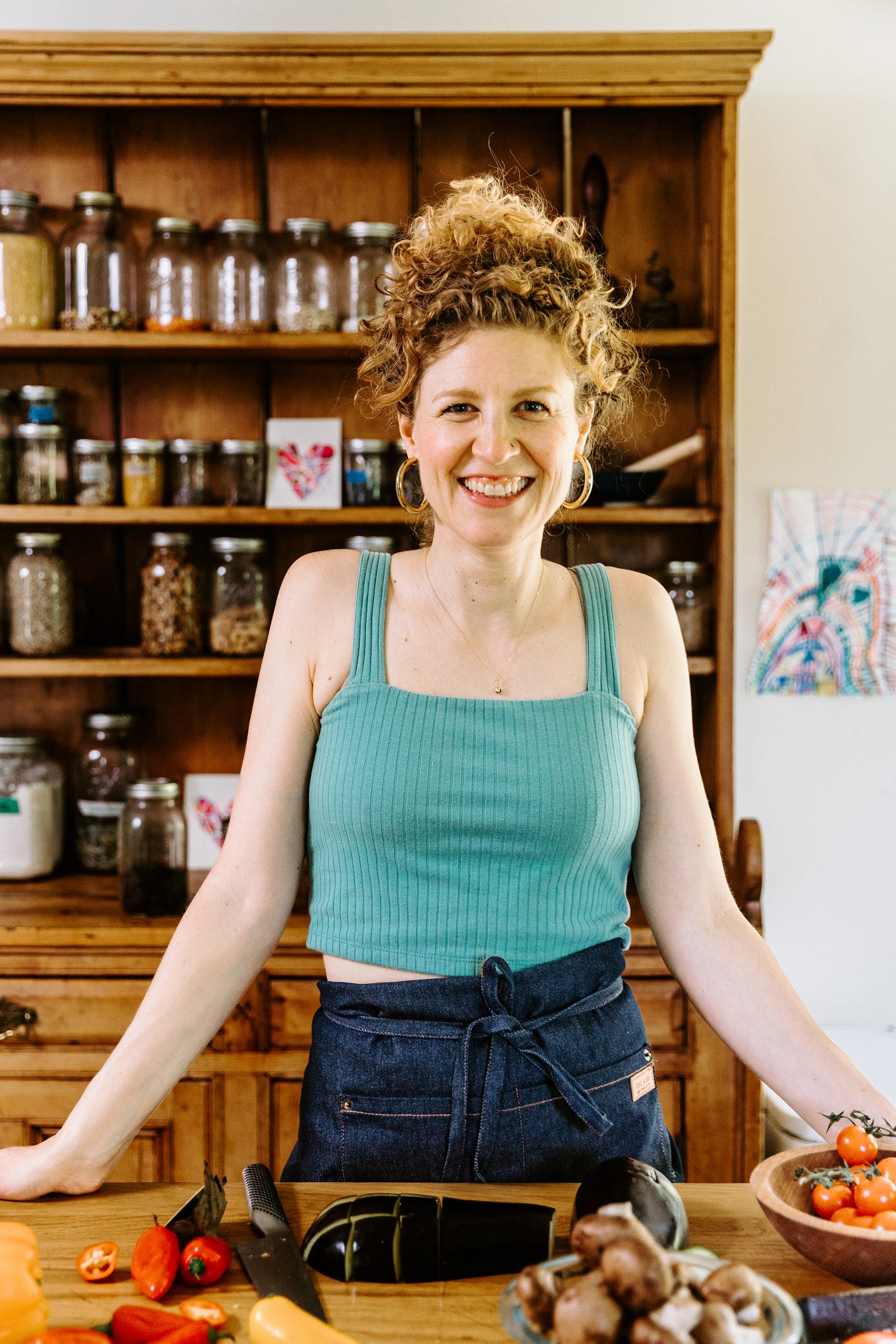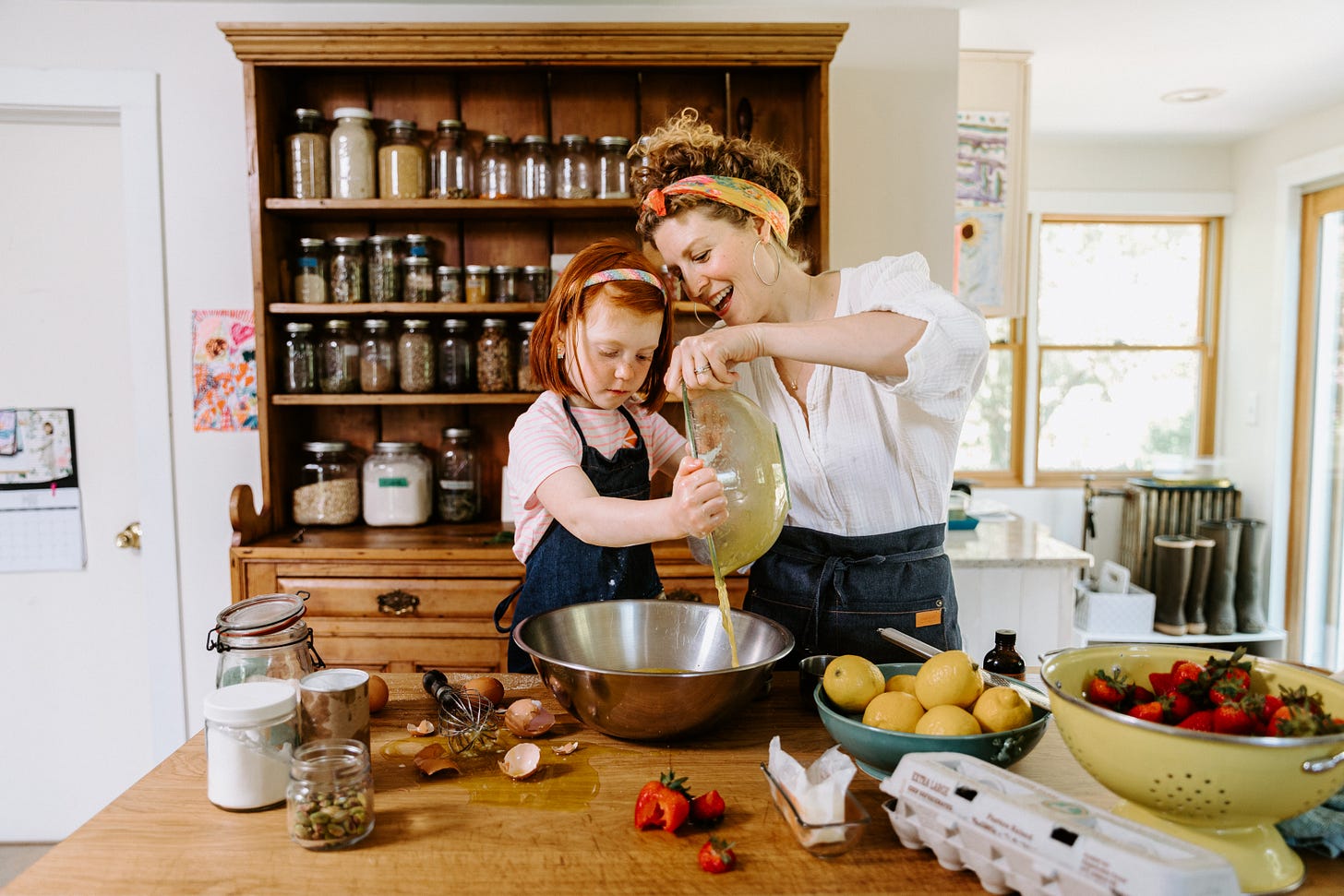how to get your kids to actually eat dinner
surviving (and enjoying) family dinner
I'm so excited to welcome
to Nest Wellness today! Her words on how to get your kids to actually eat dinner builds perfectly on our last guest post in which ’ shared about raising children who love real food. These practical guides work hand-in-hand to help parents navigate mealtime challenges. Enjoy getting to know !Emma Frisch is a chef, cookbook author, culinary instructor, mother, and co-founder of the glamping destination Firelight Camps in Ithaca, NY. Her family-friendly cookbooks are designed to help parents and children nurture their connection with seasonal food and the great outdoors. Emma was a top finalist on Food Network Star and has worked in the U.S. and abroad to help build farm-to-city food networks through schools, hospitals, universities, and community centers.
how to get your kids to actually eat dinner
by Emma Frisch
As a first-generation American and one of four kids in a multicultural household, family dinner was everything growing up. No matter how hectic things got, my Italian mamma made sure we sat down together at the table. As we got older, after-school activities made it trickier, but that just reinforced how much we valued those meals whenever we could make them happen.
That ritual stuck with me, and when I became a parent, family dinner became a non-negotiable. I wanted to cook homemade meals like my mother did and eat together as a family.
But after having my second daughter, I couldn’t keep up with the elaborate recipes I loved making. So, I started planning meals ahead and simplifying recipes. I built a lineup of go-to meals that I could tweak with seasonal produce. For example, I’d roast chicken thighs on a sheet pan with whatever veggies were in season, baking everything together and serving it with rice—or just as is!
Of course, meal planning and simplifying recipes only got me so far. As my kids grew, we hit new challenges—picky eating, defiance at the table, and all the usual kid-food drama.
This is where I see so many parents struggling: how to actually get their kids to eat the food they make.
I’d love to share some of the best strategies I’ve learned (and use daily):
Tableware Matters
I used to roll my eyes at all the “specialized” kids’ tableware, but then I saw how much of a difference a small addition can make. A rainbow spoon, a fun sippy cup, or a plate with dividers can turn dinner into something they actually look forward to. In our house, we use cloth napkins, and each of us has our own napkin ring. It’s a tiny thing, but it gives my kids a sense of belonging at the table, and a task to start and end their meal with–taking their napkin out and rolling it up to store in the ring until the next meal.
Component Cooking
Picky eating isn’t just kids being stubborn—it’s often about them trying to make sense of flavors and textures. Mixed dishes can feel overwhelming when they don’t know what’s in them.
That’s why every recipe in my meal plans includes instructions for serving the components of a meal separately without compromising on the complete recipe for the adventurous eaters in your family. For example, instead of tossing everything into a tuna and bean salad, I’ll serve separate portions of tuna, beans, and raw veggies with a little dipping bowl of dressing (the same one used in the salad). This way, they can try new foods at their own pace.
Repeated Food Exposure
On that note, getting kids to eat new foods is all about exposure. Research says a child may need to see a food up to 30 times before they accept it. I try to introduce ingredients in different forms—carrots, for example, might show up raw with dip, roasted with maple syrup, grated into a salad, or mashed with butter and salt. Over time, they become more familiar with the food and how they prefer it prepared.
Kids often go through phases of picky eating, but offering a wide variety of foods early on can help set them up for a broader palate later. I’ve seen it firsthand—my 9-year-old eats almost everything now, despite narrowing her palate drastically between the ages of 4 and 6.
Giving Kids Some Control
I follow a simple rule: I decide when and what is served, and my kids decide what and how much they eat.
I also make sure there’s always at least one “yes” food on the table—something I know my kids will eat—so they feel safe trying new things without the pressure.
I’ll admit it’s not always easy to bite my tongue, but I make a concerted effort not to watch their plates like a hawk or comment on their choices. If I notice they are only choosing to eat plain pasta instead of the chicken, I try to use these moments to gently talk about food nutrition in a way they can understand. For example, protein helps curb hunger and build muscle, whereas eating only carbohydrates takes more energy to digest and is best before lots of physical activity (rather than bedtime).
And honestly, most parents (myself included!) don’t always have the best language for explaining nutrition to kids. That’s why I often turn to trusted nutritionists (who are also parents, like Beth and Karina) who have done the research for me.
Peer Pressure (The Good Kind)
Want to get your kid to try something new? Have them eat with other friends and families, or at restaurants that serve different cuisines.
I’ve watched my youngest, who swears she “hates” tomato sauce, eat it happily at a friend’s house. She’s tried chicken feet at a dim sum restaurant and lengua (cow tongue) tacos at a Mexican spot.
Cooking with friends and family from different cultures has also expanded their palates. They’ve learned to make Chinese dumplings with their Aunt Luwei and taught their friends how to bake challah bread for Shabbat. Sharing meals with others is one of the best ways to encourage adventurous eating and learn about new food traditions (and it’s just fun!).
Table Games & Rituals
Playing simple games is one of my favorite tools for helping kids develop a positive association with family dinners. Above all, it takes the focus off what the kids are eating (both for the parents and the kids). Eating becomes the secondary activity alongside the game. It also allows everyone to participate in the conversation, creating a stronger sense of connection that’s fun. And since everyone wants to see who wins (oh, winning!), everyone stays at the table longer!
We start every dinner with a quick check-in:
Rose, Thorn, & Bud: A “rose” (a positive moment), a “thorn” (a challenging moment or emotion), and a “bud” (something to look forward to).
Two Truths and a Lie: Each person shares two real things and one made-up thing about their day. It is a great window into each other’s days!
And for games, we love ones that don’t need props (except maybe a talking stick!):
Would You Rather: My kids come up with the funniest questions, like “Would you rather have super speed or be able to talk to animals?”
20 Questions (a.k.a. The Animal Game): Someone picks an animal (or food, or other category), and everyone else works together to ask yes/no questions and guess what it is.
Collective Story-Telling: This is an improv game that practices the “yes and!” concept. It’s a great way to help kids learn to work together in real life and value each other’s ideas. Someone starts with a sentence, such as “One day, Chuchi the Squirrel woke up in his home in the big oak tree and discovered he was out of acorns!” The next person would say, “Yes, and the first thing he decided to do was to walk over to Bobo the Chipmunk’s hole in the neighboring maple and ask if he had anything to eat.” In this way, you build a story together.
These little traditions make mealtime something the kids look forward to, rather than just a battle over what’s on their plate.
At the end of the day, family dinner isn’t just about food—it’s about connection. When we take the pressure off, make it fun, and give our kids some autonomy, mealtime becomes something they (and we!) actually enjoy. And hopefully, a multi-generational tradition.
When to Seek Additional Support
Even with all these tricks, some kids still struggle with eating a balanced diet. If that’s the case, there could be underlying issues—gut health, allergies, sensory sensitivities. If you’re concerned, talking to a functional nutritionist can be a great first step. Amanda Newman is available to help, and you can book a free initial consultation here.
Emma’s books deserve a spot in this week’s favorites!
We use colorful cloth napkins in our house, similar to these, but these cute striped and embroidered napkins would liven up any table!
The animal napkin rings our family uses and these adorable fruit napkin rings -each child can have their own napkin ring, making mealtime just a little more fun and special.
Bento lunchbox for little kids, and this one for bigger kids (Nolan has this one)
These “animal riding bicycles” placemats would be a sweet addition to a lovely family table.
Emma’s Salade Nicoise is the perfect example of a meal made from components that allow everyone to build their own plate with their favorite foods and also give them the opportunity to try new foods.























I love these tips! Thank you, Emma and Beth!
Bringing healthy food to our kids is a passion, adventure, sometimes frustrating, and a BIG challenge. I am always happy to get some tips!